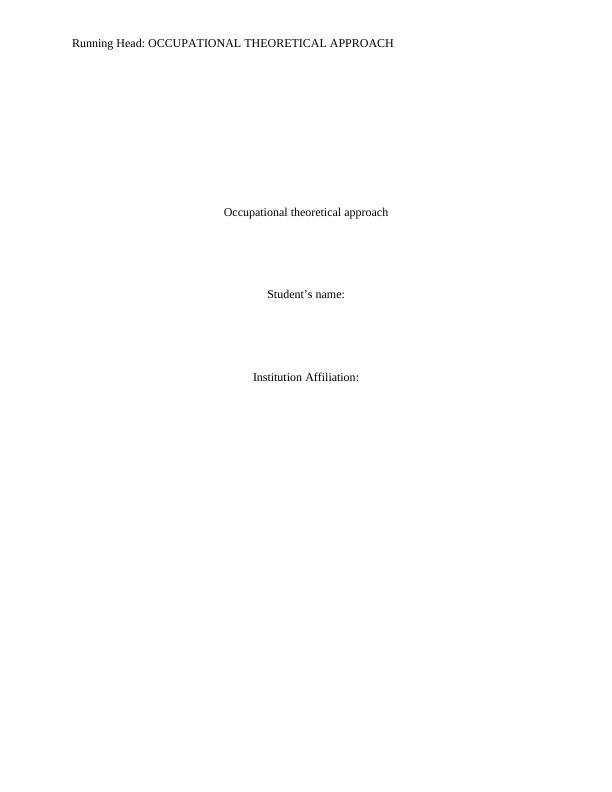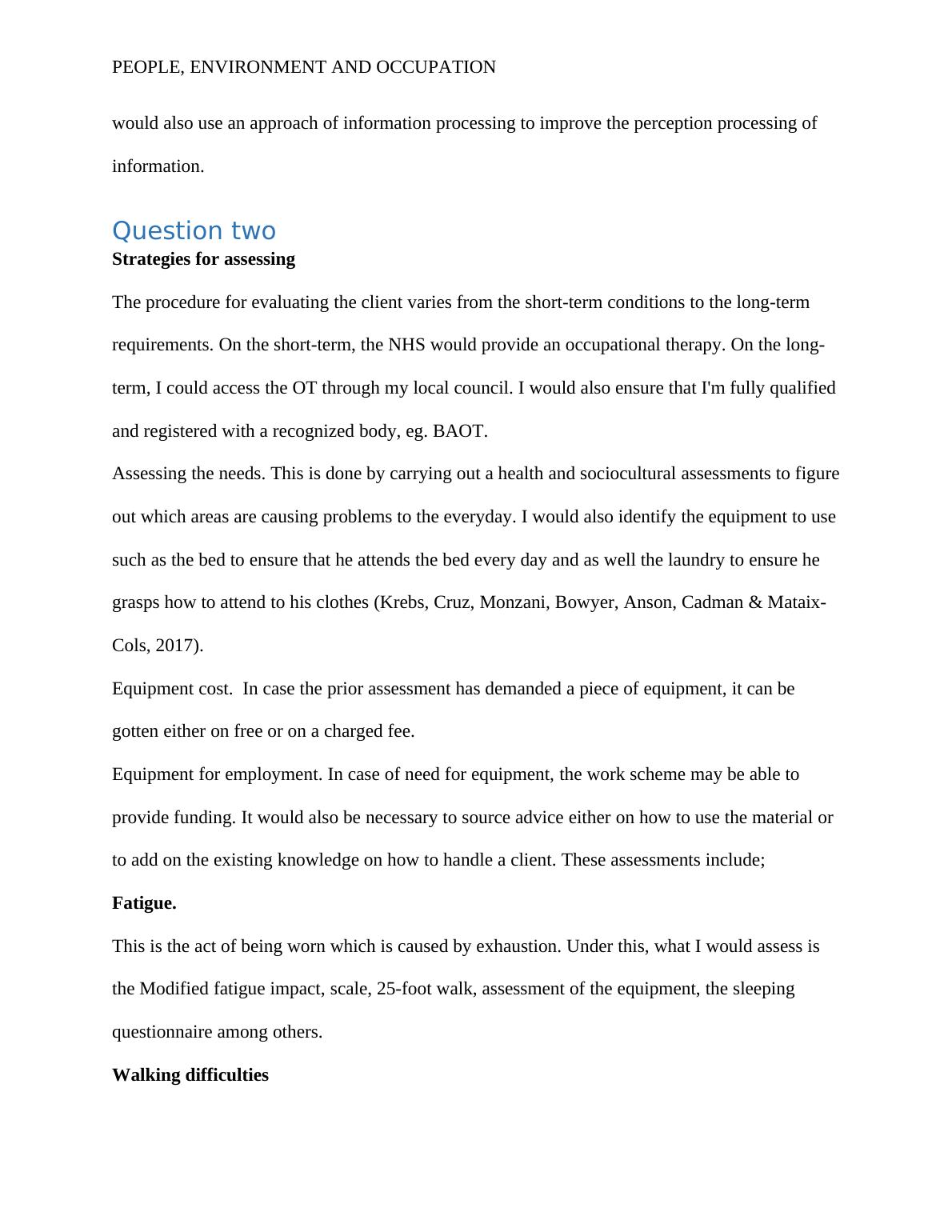OCCUPATIONAL THEORETICAL APPROACH: Cognitive retraining on clients with cognitive defects
14 Pages2591 Words155 Views
Added on 2020-05-08
About This Document
PEOPLE, ENVIRONMENT AND OCCUPATION Running Head:UPATIONAL THEORETICAL APPROACH Occupational Fatigue theoretical approach Student’s name: Institution Affiliation: Question one 2 Question two 3 Question three 5 Question four 6 Question five 10 Question six 10 References 11 Question one Cognitive retraining It is a therapeutic approach that I would focus on grooming on clients with cognitive defects so as the shortcomings would be overcome. Some of the areas to train include triggering the memory by involving him in decision making,
OCCUPATIONAL THEORETICAL APPROACH: Cognitive retraining on clients with cognitive defects
Added on 2020-05-08
ShareRelated Documents
End of preview
Want to access all the pages? Upload your documents or become a member.




